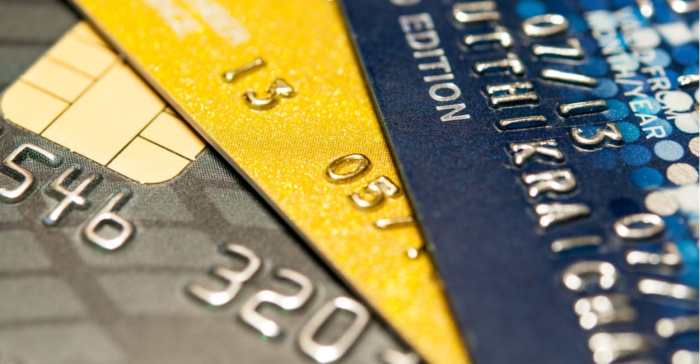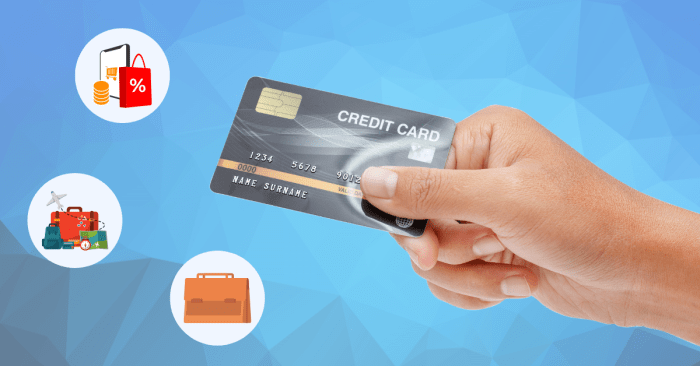Long-term Financial Planning Using Credit Cards for Business Growth
Long-term financial planning using credit cards for business growth isn’t just about racking up rewards; it’s about strategically leveraging credit to fuel sustainable expansion. This exploration delves into the multifaceted world of business credit cards, examining how responsible usage can contribute to long-term financial health. We’ll navigate the intricacies of reward programs, explore effective expense management strategies, and address the crucial aspect of debt management to ensure responsible growth.
The journey will reveal how smart credit card utilization can become a powerful tool for achieving ambitious business objectives.
From understanding the nuances of various rewards programs and optimizing spending to developing effective debt repayment plans and building a strong credit history, this guide provides a comprehensive framework for integrating credit cards into a robust long-term financial strategy. We’ll analyze how businesses can leverage rewards for expansion, equipment upgrades, or marketing, ultimately demonstrating how strategic credit card usage contributes to long-term financial stability and sustainable business growth.
Understanding Credit Card Rewards Programs for Businesses
Choosing the right business credit card can significantly impact your company’s finances. Smart utilization of credit card rewards programs can offer substantial benefits, offsetting expenses and contributing to overall business growth. Understanding the nuances of these programs is crucial for maximizing their potential.
Types of Business Credit Card Reward Programs
Several types of reward programs are available for business credit cards. Each offers unique advantages and disadvantages depending on your spending habits and business needs. The most common reward structures are cash back, points, and miles.
Cash Back Rewards Programs
Cash back programs offer a straightforward return on spending. A percentage of every purchase is credited back to your account as cash. This can be redeemed as a statement credit, direct deposit, or check. The simplicity and ease of understanding make cash back a popular choice for many businesses. However, the percentage return may be lower compared to points or miles programs, limiting the overall potential rewards.
For example, a 1.5% cash back program on $10,000 in spending yields $150 in rewards.
Points-Based Rewards Programs
Points-based programs offer flexibility. Earned points can be redeemed for a variety of options, including statement credits, merchandise, gift cards, or even travel. The value of a point can vary depending on the redemption method. While potentially offering higher returns than cash back, points programs require more careful planning to maximize their value. For example, redeeming points for travel might offer a greater return than a statement credit, but requires careful consideration of flight and hotel prices.
Miles-Based Rewards Programs
Miles-based rewards programs are tailored for businesses with frequent travel expenses. Earned miles can be redeemed for flights, hotel stays, and other travel-related expenses. The value of a mile can fluctuate based on the destination and time of year. While highly beneficial for travel-intensive businesses, these programs may be less attractive to those with minimal travel needs.
A business frequently traveling between major cities might find significant value in a miles program, accumulating enough miles for free flights or upgrades.
Comparison of Business Credit Card Reward Programs, Long-term financial planning using credit cards for business growth
The choice of a reward program depends heavily on individual business spending patterns and priorities. Comparing offerings from different major credit card issuers is essential.
| Issuer | Reward Type | Reward Rate | Annual Fee |
|---|---|---|---|
| American Express | Points | 1-1.5 points per dollar | Varies |
| Chase | Cash Back/Points | Variable, up to 5% cash back on select categories | Varies |
| Capital One | Cash Back/Miles | Variable, up to 5% cash back on select categories | Varies |
| Citi | Points/Miles | Variable, depends on card and spending categories | Varies |
Mastering the art of utilizing business credit cards for long-term financial planning requires a balanced approach: maximizing rewards, managing debt responsibly, and building a strong credit history. By strategically leveraging credit card benefits while maintaining fiscal discipline, businesses can unlock significant opportunities for growth and long-term financial stability. This approach, when executed effectively, transforms credit cards from a mere expense tool into a powerful engine for sustainable business development.
The key lies in informed decision-making, meticulous tracking, and a proactive approach to debt management.
Popular Questions: Long-term Financial Planning Using Credit Cards For Business Growth
What is the ideal credit utilization ratio for businesses?
Maintaining a credit utilization ratio below 30% is generally recommended for businesses to demonstrate responsible credit management and improve credit scores.
How can I protect myself from credit card fraud?
Implement strong security measures, including regularly monitoring statements, using strong passwords, and reporting suspicious activity immediately to your credit card issuer.
Are there tax implications for using business credit cards?
Yes, all business expenses paid with credit cards are generally tax-deductible, provided they are legitimate business expenses. Consult a tax professional for specific guidance.
What happens if I miss a credit card payment?
Missing payments results in late fees, increased interest charges, and a negative impact on your credit score, potentially hindering future access to credit.


